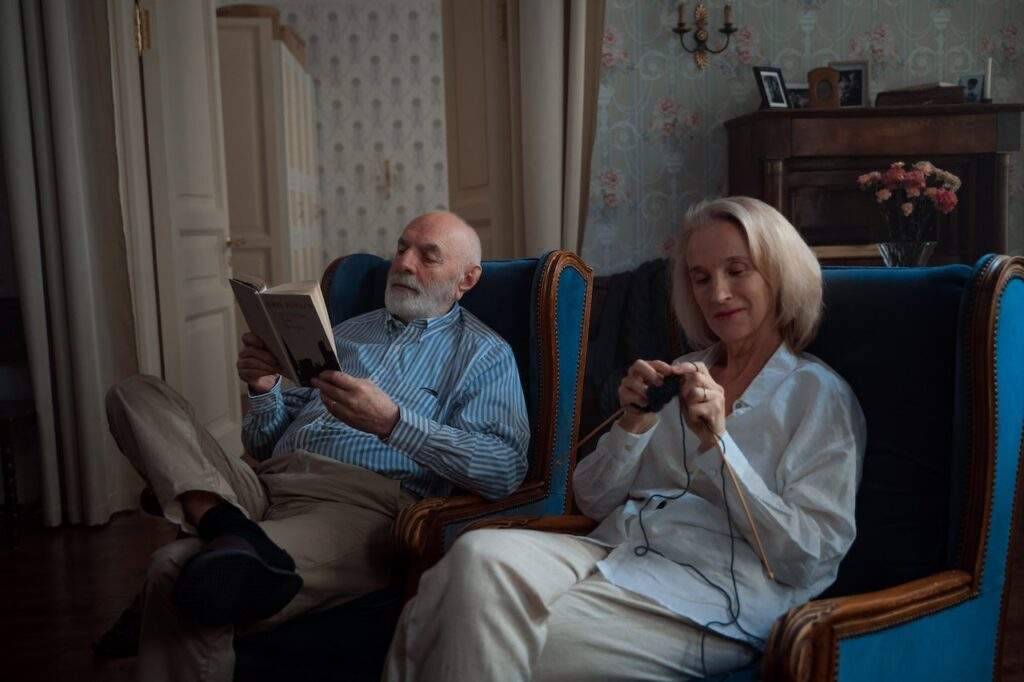Are you in your mid-40s contemplating a return to the workplace after a long career break? Let me help you rationalize how to successfully reenter the workforce. This is part science, part art and part magic.
LinkedIn’s Mom Project says that almost half of the women in the workforce take an extended leave after childbirth. An increasing number are taking a break for elder care reasons. These gaps allow us to balance our personal commitments in a healthy way even though caregiving of all kinds is exhausting and plunders our reserves in ways we cannot fathom.
For this reason, I do not care for the term “career break”. More than breaking careers, women take time to “manage life”. A positive spin on this has been a long time coming. You will notice that an increasing number of women are explaining their professional stop time as a sabbatical – childcare sabbatical, elder care sabbatical. The world is recognizing that these sabbaticals are essential for the workforce, sometimes non-negotiable. Since caregiving falls largely on women, let’s consider what drives us to make the choices we make.
You may also like:
- Unlocking New Paths: Career Choices for Women Over Fifty
- Why Learning New Skills as You Get Older is Totally Worth It!
- Starting a Small Home Business: 8 Essential tips.
Quick Summary
Navigating a return to work in your 40s involves dispelling myths like the impossibility of reentering after a long gap or undervaluing skills gained as a stay-at-home mom. Planning and upskilling are crucial, alongside building a supportive network to counter ageism. Emphasize the value gained during the break to potential employers and trust in your ability to succeed outside the home.
Why Women Enter and Exit the Workforce
You enter the workforce because what you offer is valuable: you are intelligent, qualified, hard-working and capable. The satisfaction you get from professional commitments is different from what your life at home provides; the intellectual stimulation helps you grow in multi-dimensional ways; creative solutioning helps you make a difference; inter-personal interactions nurture your maturity; and let’s be real – the financial independence is fabulous.
There are many reasons that may force you to stop working. The decision to take time off is a personal one and as long as you go into this willingly and in a planned way, nobody can fault you for the choice to take a gap.
Having a special needs child is reason number one. For that, you have the universe’s blessings to do what you have been called to do. You may choose to let your spouse be the primary bread-winner because your financial contributions may not make up for child care costs or elder care priorities overtake all other options. You may decide that the work you are doing is not fulfilling and the time off will allow you to regroup, retrain and reset. Health challenges could force you to take time off.

The reason for a stopping your career that is cited most often is this: guiding and supporting your child from infancy through high school is a challenging and rewarding task. Who better to provide this nurturing than a devoted mother? Regardless of the reasons, the return to work is replete with myths and realities.
Let’s tackle the myths that confuse us.
Myth #1: Reentering the Workforce after a Long Gap is Impossible
Kick “impossible” out of your vocabulary.
The level of difficulty depends on the duration of the gap. Three months, no issues; six months requires a supportive employer; one year is challenging but possible to overcome; longer takes serious planning. The reason the challenge exacerbates with the length of the gap is rooted in common sense: the world changes (think economic recessions), technologies change (think AI), management principles shift (think hybrid workforce). Plus, it is a fact that employers are more willing to invest in younger people who will serve the company for a longer time than older employees. You can overcome this bias by recognizing and adjusting to the underlying factors.
Be cognizant of what you are bringing to the employer just as much as what the employer is delivering to you.
Ask yourself this question: How can I represent my time off as a period of value for a potential employer?
Think of what I would be considering if I am looking at your resume for a position in my company and I see a ten-year childcare gap. I have limited time to evaluate you so I will hone in on three factors:
- How did you arrive at the decision to take time off?
- What did you serve others while away from your profession?
- What learnings and skills are you bringing to me from your gap years?

Your level of productivity in life will inform me of how smoothly you will reenter and readjust to a landscape that might have changed dramatically in the time you were away.
Myth# 2: My Worth is Less because I am a Stay-at-Home Mom
This is only true if YOU believe it.
My friends who are stay-at-home moms are kickass women who shape the world around them in far better ways than many of their professional colleagues. They are the CEOs and CFOs of their home. They are amazing leaders and role models to their children. They work harder and in more thankless ways than me. They are well-informed, well-read and well-traveled. My own mother and mother-in-law would have made exceptional Chief Marketing Officers if their context would have allowed it. Instead, they whipped their families into shape with a stick and a carrot, high expectations, tremendous support and enormous love.

You have done the same as a stay-at-home mom, haven’t you?
Ask yourself: How do I articulate the mission that drove me to stay at home?
You have believed in yourself and your mission. You have been the BEST mother, friend, wife, daughter, granddaughter, aunt you can be. You have found fulfillment from your achievements at home and in the community. You can show your daughters that women leaders bring incredible value to our world. You can show your sons that having women as allies is essential for our collective success. What’s not to value in this?
Myth# 3: I do not Trust myself to Succeed at Work
Have you heard yourself say this: “I haven’t worked outside the house in so long, I don’t know if I can do it.”
Say that slowly. I…haven’t…worked…outside…the…house. Pay due respect to the enormous amount of work you have done inside the house. Do not let anybody, least of all yourself, shortchange you on this.
Ask yourself: Do I have the work ethic to add value outside the house like I have done inside the house?
If the answer is yes, repeat after me: I bring value to my ecosystem every day. I can take this value to others. I have to believe in myself and have confidence that I can bust Myth #1.
Then, go do it.
Now let’s tackle the practicalities of reentering the workforce.
Learning and Upskilling: Give yourself Several Months to Plan your Return to Work
This part is the science of reentry.
Before you took a break, you may have been an engineer, doctor, lawyer, scientist, marketing specialist, technologist, or teacher. After a long professional hiatus, you need to give yourself the runway to upskill. Research the paradigm shifts that have occurred in your industry during the time you have been away.
Has technology changed? Are you well versed with social media if that will be a tool you need to leverage?
Once you understand the changed landscape, research what training or academic program will help upskill. Are there certifications that will help you learn new skills? How robust is the certification? Does it involve a test? If yes, that is an indicator to a potential employer that you are up for the challenge.

Create a game plan for how you will become current. This will give you a timeline for preparation. Money may not be available in abundance when you return to work. Choose your investments in retraining wisely.
Networking: Find Champions and Counter Ageism
This part is the art of reentry.
Look closely at your social network and find three or more allies who will be willing to let you reenter the workforce without pay or minimal pay. Be realistic – this may not be the opportunity you dream of, but it will be an important step in your reentry. If possible, seek women leaders; they are more likely to understand the pressures that motivated you to take time off.
These allies will become your champions. They will serve as your references and they will vouch for your work ethic. While you are preparing to return to the workforce, spend time to get to know these champions well and use their network to find the kind of job that you want to do and that is right for you. Discuss relevant topics such as part- vs. full-time or freelancing vs. employment and figure out what combination works best for your personal situation. These choices are unique to your context and your champion’s point of view will be important in your journey.

Ageism is a fact around the world. There is no denying this, but think young even if you cannot be young(er).
India’s median age is 28.2 years. This means that it is highly likely that the people looking at your resume, considering your reentry, making impressions about your capability are younger than you. There is nothing you can do about this, but you can do something about projecting vibrancy.
Are you a hip 40-something who is social media savvy, pop culture aware, urban lingo smooth and do you have younger friends? Then don’t fear ageism. Present yourself in a context that your resume reviewer is aware of. Let them see that you have adjusted well, that having you around will be beneficial and not pose a learning curve, that you will blend in with the teams and organizational culture with ease.
Conversely, do you find that you’ve become cynical and disconnected from people a decade younger? If so, a readjustment is in order before you return to work. Anybody who tells you that people do not make impressions in the first ten seconds after an introduction is wrong. How you present yourself and project your attitude are as important as the experience you bring to the table.
When you are around younger people in the workforce, listen to their voice and add value from your experience. Avoid making the cardinal mistake of unloading all of your learnings as if you are parroting a holy book. Remember that the context has changed while you were away. You have as much to learn as you have to impart.
Presenting: Refresh your Resume Effectively
This part is the magic of reentry.
Most of us are nauseatingly practical when creating a resume. We chronicle our experience in chronological order: first this, then this and then that. When you have had a long break in your career, this structure is impossible to adhere to because chronologically you’ve done only one thing for years – taken care of others.
Present the gap in your resume as a sabbatical. Just as you would with employment history, have a narrative on what was your mission and what you did in this gap: my goal was to be of value to my community by raising awareness for xyz, I coached my daughter to compete (locally, regionally, nationally) in chess (fencing, golf, swimming…), I served on the board of the school’s parent-teacher association, I wrote a blog with x number of readers to raise awareness of breast cancer and so on. This will help you structure your resume “functionally”. In the decade you took to raise children, you did numerous activities. Bucket these in appropriate ways and show the world how you planned, led, executed, and made a difference. This will help you focus on what you have done and not when you did what. It will a potential employer get quick answers to the questions about how well you will fit into their mission.
If you lack confidence in recasting your experience in this way because your professional ecosystem does not value the time women take off then refresh your resume in the best way and leverage your champions to find the right opportunity. Regardless of your approach, stop thinking of the professional gap as “I dropped out of the workforce”. Start thinking of it as a step in your history.
Have a mission, trust yourself, think big, be confident, be effective.
Trust me when I tell you that the professional world is hungry for this.
The content belongs to Rumy Sen. Reproduction is prohibited. Used on this website by permission from the author.
Author
Social
Other

Rumy Sen
Rumy Sen is a computer scientist, entrepreneur, former CEO and mentor to women in tech. She founded Entigence Corporation in 2002 and served as CEO for two decades. Under her leadership, Entigence became a recognized brand in the higher education and public sector verticals, ranking thrice in the “Inc. 5000 Fastest Growing Private Companies in America” list and in CIOReview’s “20 Most Promising Education Tech Service Providers” list. In 2021, she oversaw the acquisition of Entigence by Deloitte. She now serves as a strategic advisor and data evangelist at Deloitte. Her work enables CxOs underpin strategy with a data-driven focus. Rumy holds a BS in Computer Science from the University of Iowa and an MS in Computer Science from Virginia Tech.






